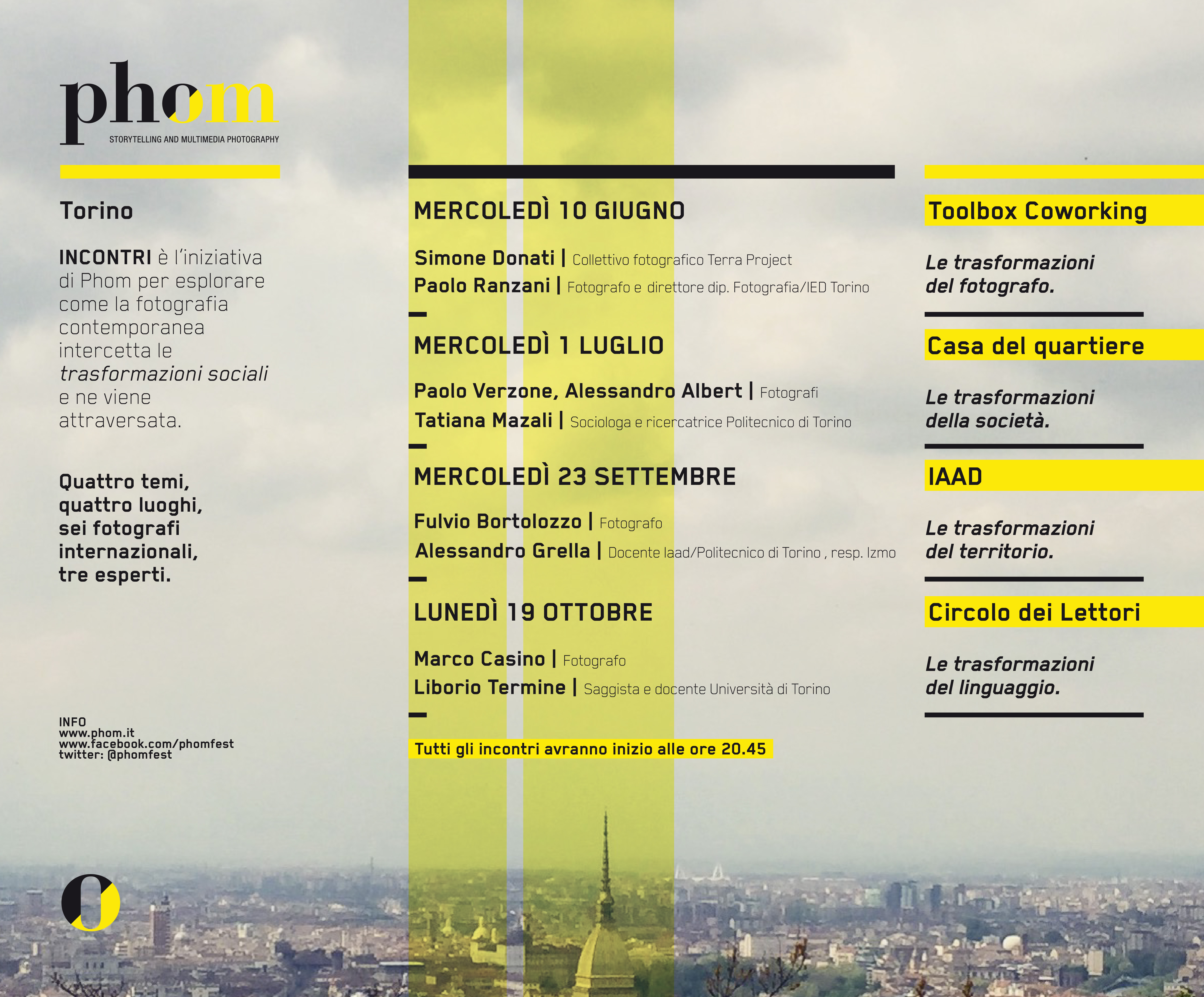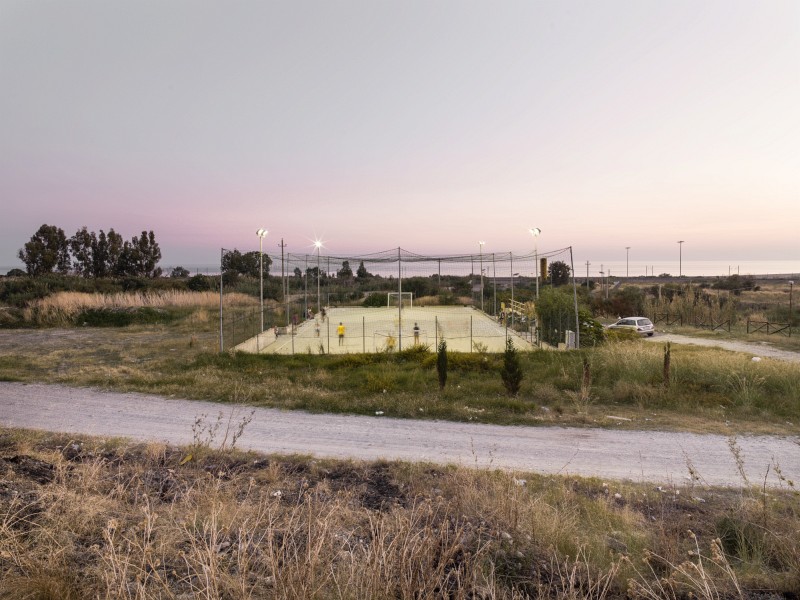
© 2013 Antonio Armentano, Montebello Ionico (RC), Saline.
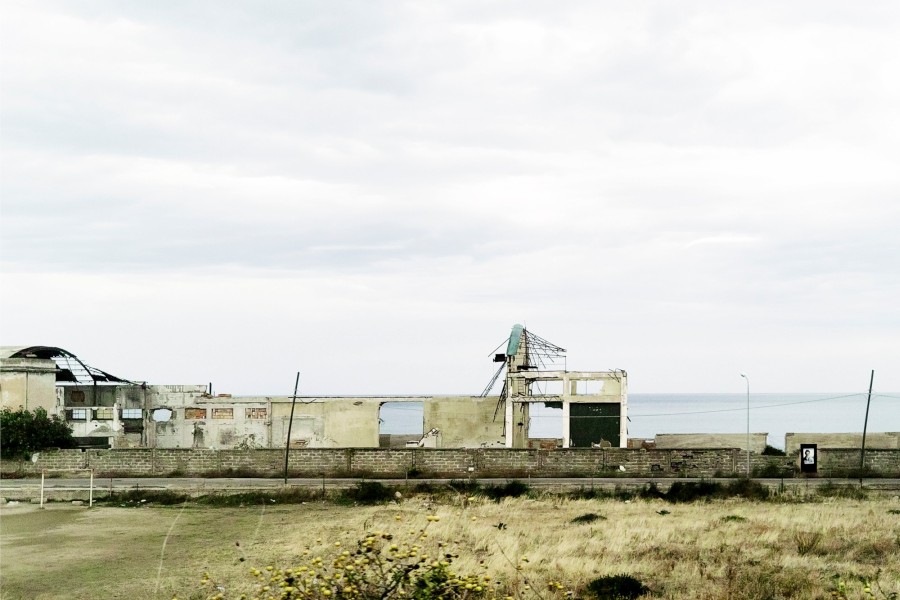
© 2012 Nino Cannizzaro, Palermo - Messina.
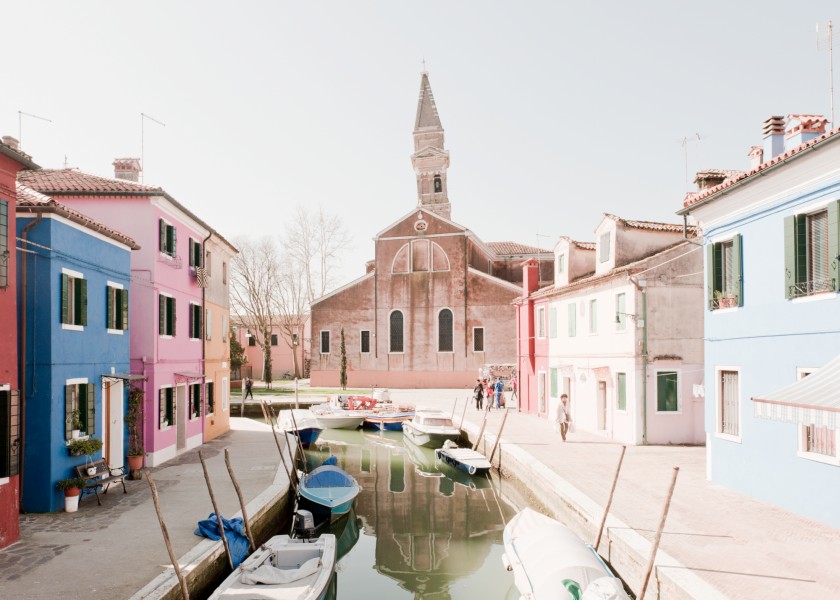
© 2014 Claudia Corrent, Isola di Burano (VE).
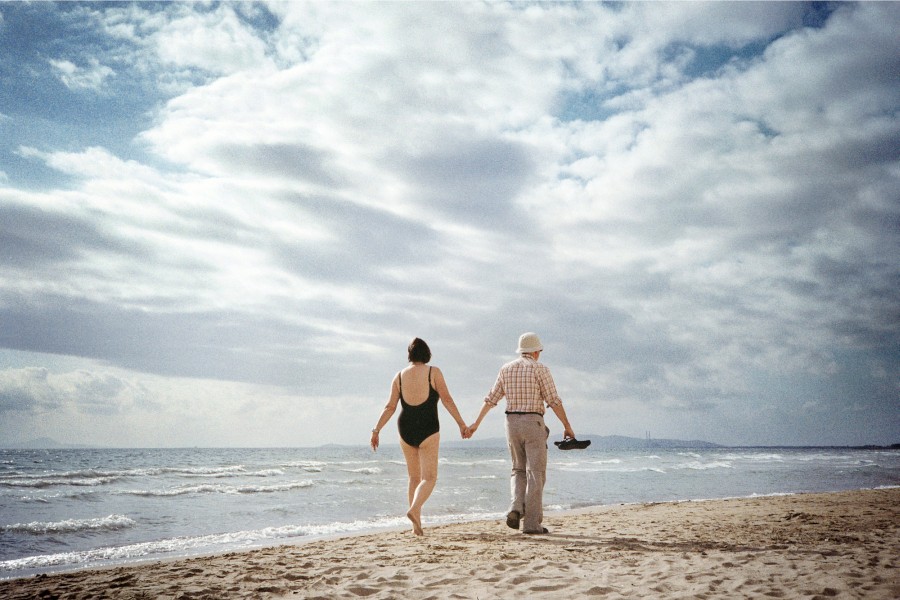
© 2013 Benedetta Falugi, Follonica (GR).
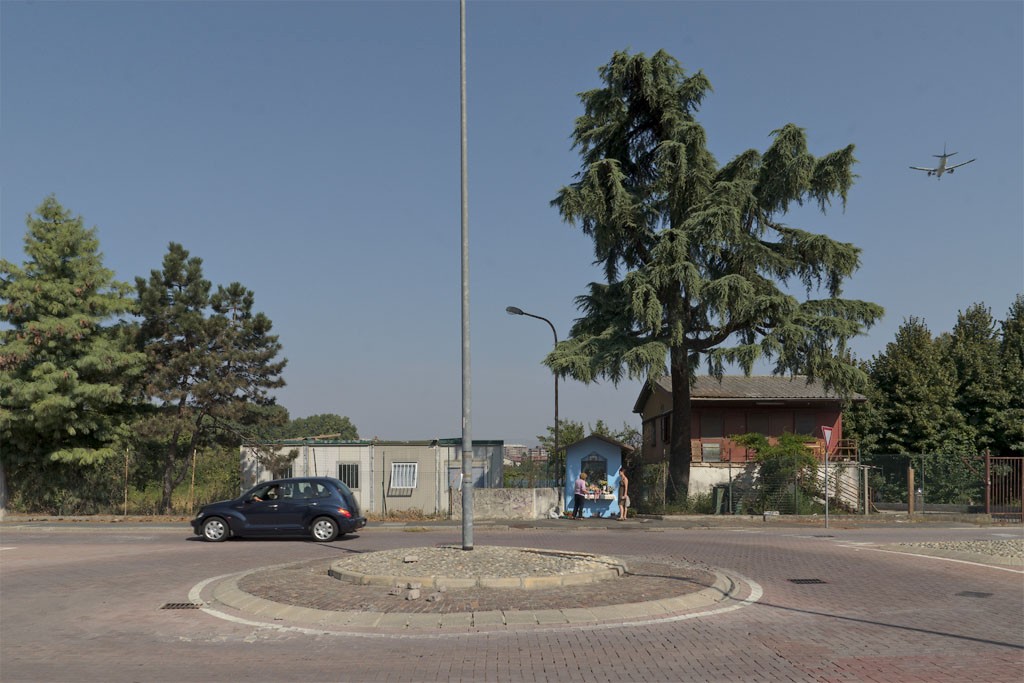
© 2013 Mauro Thon Giudici, Milano.
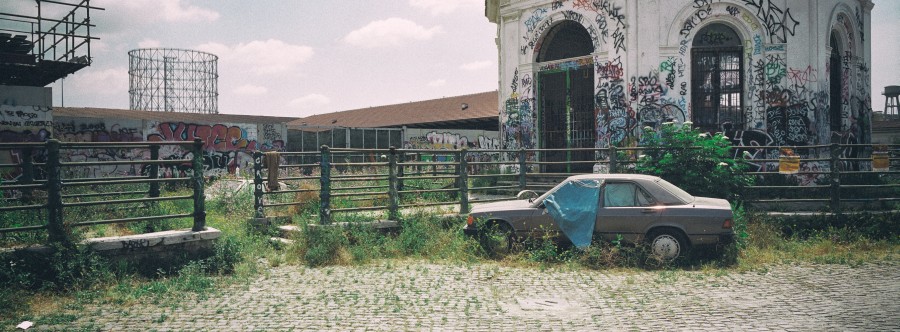
© 2009 Salvatore Lembo, Roma, Testaccio.
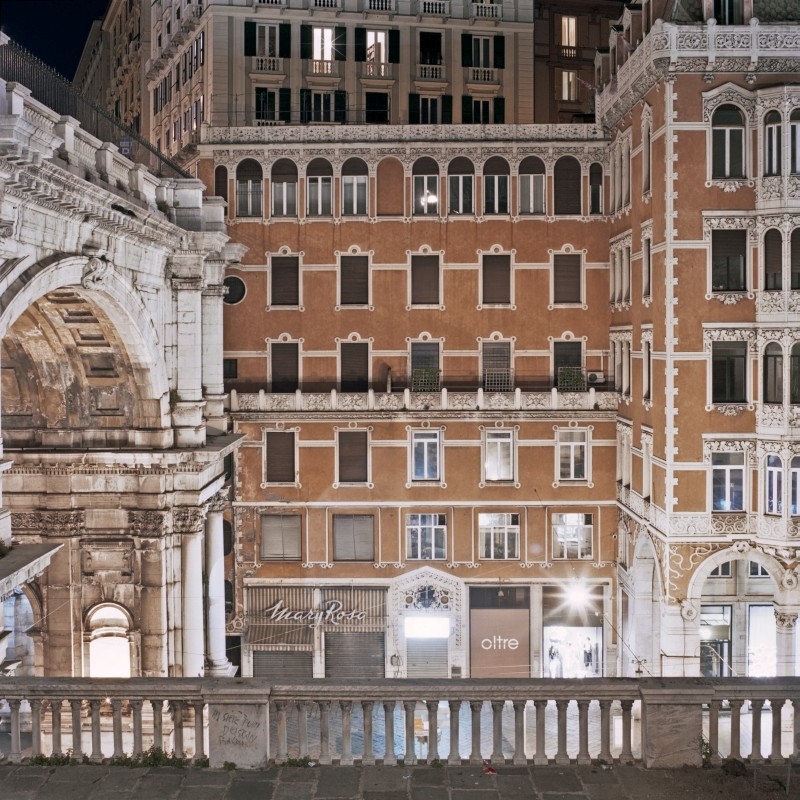
© 2012 Andrea Lombardo, Genova.
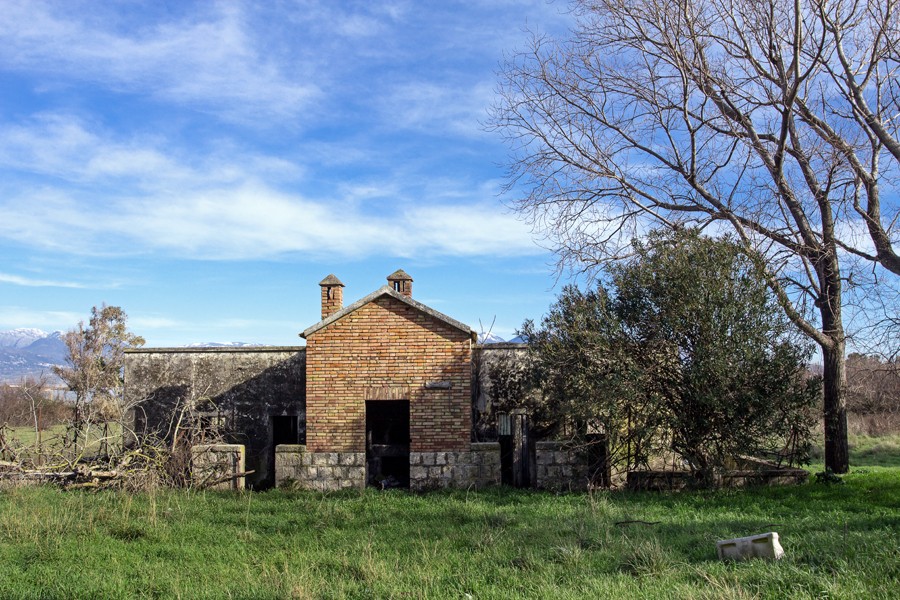
© 2011 Gaetano Paraggio, Battipaglia (SA), litorale.
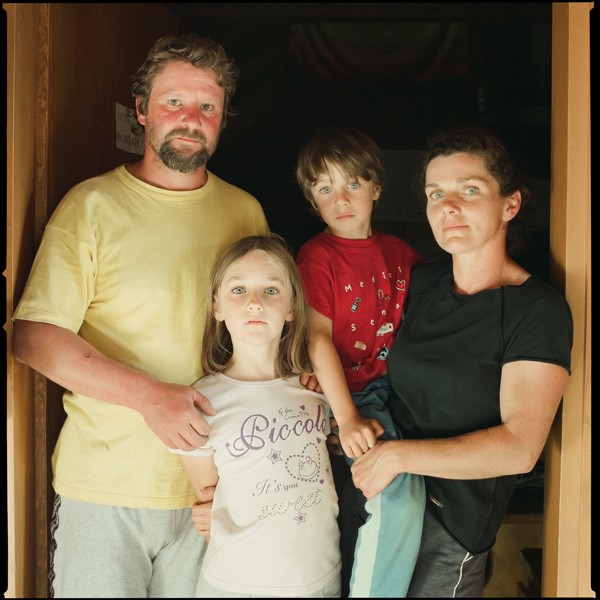
© 2013 Giancarlo Rado.
Diego Rizza, la moglie Anna Zurek , il figlio Tomek e Savanna ritratti in Malga Fossernica di Dentro , Caoria, Trentino, prima della chiusura dell'alpeggio estivo.
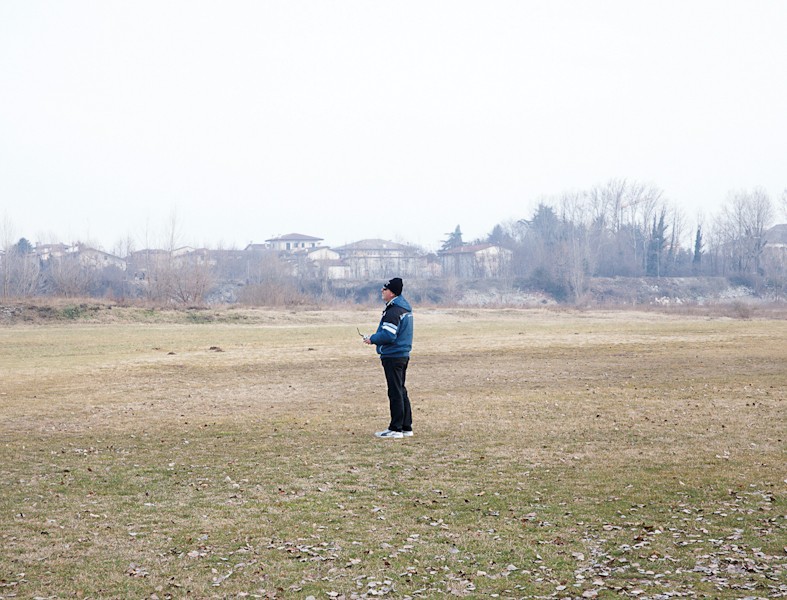
© 2014 Giacomo Streliotto, Cartigliano (VI).
L’idea che gli italiani hanno del proprio Paese è mutevole e sfaccettata come il paese stesso. Eppure, in qualche maniera, di questo Paese si percepiscono i confini, i limiti, i desideri.
A trent’anni dal “Viaggio in Italia” curato da Ghirri, “Questo Paese” prova nuovamente a descrivere il perimetro della nostra penisola e delle sue isole. Un esercizio di geografia interna, una sorta di taccuino di viaggio del nostro “Inland Empire”, diversissimo dal 1984 del primo “Viaggio”, e incredibilmente uguale a se stesso.
Un’Italia fatta di margini, confini, spazi sottili e persone, a volte assenti ma di cui abbiamo intuito il passaggio.
Partendo da uno spazio volatile e condiviso come il web, “Questo Paese” si muove all’interno di questi margini, per prendere corpo fisico in una mostra ed un progetto editoriale.
Abbiamo incontrato l’ideatore e curatore Fulvio Bortolozzo, che ci ha raccontato la genesi e gli sviluppi di questo progetto.
Da dove ha origine l’idea del progetto?
Dalla presa d'atto che avevo visto scorrere trent'anni esatti dal primo e ultimo progetto editoriale collettivo, a mia conoscenza, che avesse avuto l'ambizione di riunire dei fotografi attorno al tema dell'iconografia del Bel Paese. Mi riferisco al mitico “Viaggio in Italia”, voluto e curato da Luigi Ghirri.
Il progetto prende corpo nel web, all’interno del fecondo e scalpitante gruppo che è WDTR. Qual è il ruolo della rete in questo progetto?
Un ruolo fondamentale. Proprio l'esperienza nella rete, per me iniziata nell'ormai lontano 1998 con il primo sito personale e prima ancora con le BBS cittadine e i modem acustici, mi ha dato lo spunto per considerare possibile usare un approccio differente al tema dell'iconografia italiana dei luoghi. Nel 1984 la rete non esisteva ancora e i canali di diffusione della fotografia erano legati all'editoria, in particolare specializzata e periodica, oltre che alle rarissime sedi espositive. Prima di allora per lunghi anni la sola esistente fu quella di Lanfranco Colombo a Milano, la Galleria Diaframma Canon. Strutture quindi tradizionali, con tutto quello che questo significa in termini di selezione dei fotografi e diffusione del loro lavoro. Con il Web 2.0, unitamente alla tecnica digitale di produzione e diffusione delle fotografie, assistiamo invece ad un azzeramento epocale di ogni barriera tecnologica e quindi anche “relazionale”, almeno in apparenza. Nel mare magno di miliardi di fotografie prese e viste di continuo si impone però l'esigenza di ritrovare non delle barriere, ma delle canalizzazioni dei flussi. Per questo motivo nel settembre 2013 decisi di aprire per i miei contatti su Facebook “We Do The Rest”, un gruppo chiuso nel quale poter pubblicare e discutere del fotografico senza finire sommersi dallo tsunami di parole e immagini tipico di questo come di altri social network. La cosa interessante è che certamente i primi nomi li ho scelti io, però nel tempo ognuno dei partecipanti ha portato nel gruppo persone che stimava e così si è formata una piccola comunità piuttosto vivace, ma coesa. Verso la scorsa primavera mi sono reso conto che diversi fotografi prendevano immagini nei loro luoghi di vita seguendo un proprio percorso di ricerca. Occasione eccellente per fare una selezione senza farla cadere dall'alto di relazioni personali o medaglie appuntate da qualche istituzione, ma direttamente dal reciproco riconoscersi di persone che osservavano e si interessavano l'un l'altra delle fotografie man mano che scorrevano nel gruppo. Da qui all'idea di realizzare un fotolibro On Demand, rigorosamente con blurb.com per restare coerenti con le strutture basilari della rete, il passo è stato davvero breve.
Questo Paese ha già avuto una prima tappa pubblica come mostra al Festival di Corigliano Calabro e sappiamo che diventerà anche un libro. Quali sviluppi futuri prevedi per il progetto? È previsto un ritorno nel web sotto forma di prodotto dedicato, oppure ritieni che la forma mostra e libro siano quelle più coerenti?
Corigliano Calabro è arrivato come un dono inatteso e davvero speciale. La condizione che posi ai fotografi che selezionai per partecipare al progetto del fotolibro fu che mi sarei preso tutto il tempo per farlo, senza che mi venissero create pressioni di sorta. L'occasione di esporre a Corigliano Calabro Fotografia rischiava quindi di spingere tutto verso una conclusione troppo affrettata del progetto. Per fortuna la grande intelligenza e sensibilità di Gaetano Gianzi, anima del Festival, ci ha permesso di compiere l'esperienza di un'esposizione del “work in progress” di 10 fotografi sui 25 partecipanti al fotolibro, con tre stampe fotografiche ciascuno. Durante i giorni della manifestazione vi è stata poi l'integrazione di una mia presentazione del progetto accompagnata da uno slide show che riuniva tutti i fotografi, sempre con 3 fotografie ciascuno. Di questo c'è testimonianza nel video girato da Mauro Thon Giudici e che è visibile sul mio canale You Tube o anche dal blog Camera Doppia. Per ora, la formula che prevede un libro On Demand e mostre collettive mi pare la più equilibrata. Penso al web sempre come ad un luogo di incontro per tessere occasioni di scambio che trovino nel quotidiano reale di ciascuno il loro punto finale di espressione.
Cosa ci indica, cosa del nostro Paese ci fa vedere “Questo Paese”?
Il titolo mi arriva dalla tossica abitudine di espormi quasi quotidianamente a notizie, talk show e altri appuntamenti televisivi legati alla politica nazionale. Nel dibattito, sovente accesissimo e sconnesso, ricorre di frequente l'interiezione “questo paese”. Un modo di riferirsi all'Italia che trovo allo stesso tempo fastidioso, quasi come una presa di distanza emotiva, e però efficace nell'evidenziare la crisi in atto tra cittadini e istituzioni democratiche. Non si tratta quindi di fare un nuovo “Viaggio in Italia”, perché l'Italia è un'entità che com'era concepibile nel 1984 non esiste ormai più, ma un percorso, molto intimo e privato, di venticinque persone le quali, per esclusivo bisogno personale, fotografano cosa c'è intorno a loro. Per questo nel sottotitolo scrivo “osservazioni nei luoghi”. Una performance che è essa stessa oggetto di osservazione, prima di essere dispositivo per osservare.
La maggior parte delle fotografie sono prevalentemente dedicate a dei luoghi e solo in un paio di casi rivolgono l’attenzione alle persone. Come mai questa scelta, che spinge il progetto in una direzione per certi versi diversa dalla tradizione?
Qui entra in ballo la mia crescente insoddisfazione per la suddivisione in “generi” dell'atto fotografico. Non ritengo più utile, nemmeno a livello didattico, separare le fotografie e i fotografi in sottogruppi definiti dal loro soggetto o luogo d'azione prevalente. Per me esiste solo il “fotografico”, che è primariamente un atto, un'esperienza psicofisica diretta e concreta. Che questo capiti in un posto piuttosto che in un altro o davanti ad un oggetto, una persona, un animale non rileva per nulla. Se proprio una distinzione di qualche tipo si fosse costretti a fare, per le solite insuperabili necessità di semplificazione divulgativa, allora vedrei bene il tener conto di altri filoni che chiamo “tradizioni”: passaggi di testimone tra fotografi e fotografi che avvengono direttamente in vita o per eredità spontanea. In questo senso, per esempio, vedo una tradizione americana, che nasce in Europa e qui ritorna. Ad essa mi sento di appartenere e su queste basi riconosco i miei simili, in senso fotografico.
Che tipo di feedback avete ricevuto dalla prima uscita pubblica del progetto?
Molto lusinghiero. A Corigliano Calabro siamo stati accolti con grande interesse ed apprezzamento. Un giornalista di valore come Michele Smargiassi ha poi scritto di noi sul suo blog “Fotocrazia” con delle espressioni di stima che ci esortano ancor più a dare il meglio di noi stessi nel non deludere le tante aspettative suscitate. Qualche rara voce negativa mi è per il vero giunta, ma mi paiono più che altro dei fraintendimenti dell'operazione che spero vengano dissolti dalla conclusione del lavoro.
Prossima tappa il libro quindi. Puoi anticiparci qualcosa sul progetto editoriale che avete intrapreso?
Una cosa vorrei anticiparvi. All'interno del gruppo We Do The Rest non abbiamo solo persone che fotografano e basta, ma anche dei blogger e scrittori che diffondono parole in varie forme e luoghi virtuali o reali. A loro ho chiesto di voler contribuire all'impresa collettiva con un proprio testo liberamente redatto. Questo perché, al di là del compito di curatore ed editore che mi sono assunto, desidero che il progetto rimanga aperto alla più ampia partecipazione possibile. Magari divenendo così l'inizio di qualcosa di molto più durevole. Chi vivrà, vedrà.
Intervista a cura di Marco Benna
ENGLISH VERSION
The perception Italians have of their home country is as fickle and multifaceted as the country itself. And yet one can still perceive its boundaries, limits and desires to some extent.
Thirty years after “Viaggio in Italia” curated by Ghirri, “Questo Paese” attempts to describe the perimeter of our peninsula and its isles once more. It is an exercise of domestic geography, a sort of travel diary of our “Inland Empire” - which is as utterly different from the first “journey” in 1984 as it is incredibly identical to itself.
It displays a country made of margins, boundaries, subtle spaces and people - that are absent at times, but that we can still sense as they pass us by.
Starting from such a volatile and shared space as the Internet, “Questo Paese” navigates within these margins and assumes a physical body in the form of an exhibition and an editorial project.
We met up with its creator and curator, Fulvio Bortolozzo, who told us about the genesis and development of this project.
Where does the idea of the project originate from?
From the acknowledgement of what I had seen flowing exactly thirty years from the very first and last collective editorial project (that I know of) with the ambition of gathering photographers around the iconography of the Bel Paese. I am referring to the cult “Viaggio in Italia”, conceived and curated by Luigi Ghirri.
The project untangles in the Web within the prolific and bustling WDTR group. What role does the Web play in this project?
A crucial role. It is the expertise in the Web (which for me started in long-gone 1998 with my first personal website and, before then, with civic BBS’s and acoustic modems) that hinted me to consider the possibility of a different approach to the theme of the Italian iconography of places. The Web didn’t exist in 1984 yet, and the distribution channels of photography were connected to the editorial world - namely the sectoral and periodical publications - and to extremely rare exhibition spaces. Before then and for a number of years, the only space of this sort was Lanfranco Colombo’s Galleria Diaframma Canon in Milan. That is a traditional facility, with all its implications in terms of selection and distribution of the exhibited work. As Web 2.0 comes along, together with the techniques of digital production and distribution of photos, we face a pivotal resetting of all technological and “relational” barriers - at least on the surface. However, in the ocean of billions of photos that are taken and looked at constantly, there is a urge for rediscovering not so much barriers, but a channelization of flows. That is the reason why I resorted to opening “We Do The Rest” to my Facebook contacts in 2013, a closed group where to publish and debate photography without being submerged by the tsunami of words and images that is typical of other social networks. The interesting thing is that I did not choose the first names myself - in time, each of the participants brought people they esteemed to the group, and that is how a small yet cohesive and quite vivacious community came to life. Towards last spring I realised that a number of photographers were shooting in the locations of their life by following their own research path.
It proved an excellent opportunity to make a selection without having it imposed from the heights of of personal relationships or medals being pinned by some institution - rather, it sprang out directly from the mutual discerning of people who observed and felt reciprocally drawn to images as they browsed through the group. It was a short step between this and the the idea of releasing a photo book On Demand, strictly using blurb.com in order to stay coherent to the basilar structures of the Web.
Questo Paese has already had a first public leg as an exhibition at the Corigliano Calabro Festival and we know it will be released as a book. What future developments do you see for this project? Are you planning on a comeback to the Web as a dedicated product or do you deem the exhibit and book forms to be the most coherent ones?
Corigliano Calabro arrived as an unexpected gift, a really special one. The condition I posed to the photographers I selected to take part to the photo book project was that I would have taken my time to make it - without receiving pressuring of any sort. Therefore, the opportunity of displaying at Corigliano Calabro threatened to push everything towards a much too rushed conclusion of the project. Fortunately the great intelligence and sensibility of Gaetano Gianzi (head of the Festival) allowed us to experiment with the exhibit of a “work in progress” of 10 out of the 25 photographers participating to the photo book, with 3 prints each. During the festival days there was an integration with my presentation of the project with a slideshow of all the photographers, still with 3 photos each. The video shot by Mauro Thon Giudici testifies for it on my You Tube Channel - it’s also visible on Camera Doppia's blog. As for now, I think the formula of one book On Demand and collective exhibitions is the most balanced. I always think of the Web as a place for meeting and interweaving exchange opportunities, that in turn achieve their ultimate point of expression in the real daily life of every participant.
What does “Questo Paese” indicate and what does it reveal of our home country?
The title derives from my intoxicating habit of exposing myself, on an almost daily basis, to news, talk shows and other tv shows on domestic affairs. In the often feisty and disconnected debates one often comes across the interjection “questo Paese” [“this Country]. It is a way of referring to Italy that I deem simultaneously as annoying as an active emotional detachment and yet quite effective in highlighting the current crisis between citizens and democratic institutions. Hence it is not about taking a new “Viaggio in Italia”, because the Italian entity as perceived in 1984 no longer exists. It is more about embarking on an extremely private and intimate journey of 25 people who shoot what surrounds them for solely personal needs. That is why my tagline is “observations on the places”. It’s a performance that is the object of observation itself, before turning into a tool to observe.
The majority of photos are dedicated to places. Only a couple of then turn the focus on to people. What’s the reason behind this choice that pushes the project towards a direction that is somewhat different from traditions?
This is where my dissatisfaction with the subdivision of the photographic act into “genres” kicks in. I no longer deem it useful, not even on a didactic level, to divide photographers and photographs in to subcategories that are defined by their prevailing subject or sphere of action. For me, all that exists is what is “photographic”, which is primarily an act, a direct and concrete psycho-physical experience. Whether this occurs in one place rather than another or before an object, a person or an animal does not count in the very least. If one were still compelled to create a categorization of some sort, in the name of the usual, unsurpassable needs of divulgative simplification, then I would agree on taking into consideration other currents - that I call “traditions”: i.e. passing the baton from one photographer to the next in real life or because of a spontaneous legacy. In such terms, for instance, I do see an American tradition that was born in Europe and that returns here. I feel like I belong to it and it is on these grounds that I acknowledge my counterparts in photographic terms.
What kind of feedback did you first receive from the the first public display of the project?
It was extremely flattering. Corigliano Calabro welcomed us with much interest and appreciation. An esteemed journalist such as Michele Smargiassi later wrote about us on his blog, “Fotocrazia”, with highly appreciative words - which exhorts us to give the best we can in not disappointing the manifold expectations we have aroused. Actually I did hear of a few rare negative critiques, but I figure they are more of a misunderstanding of our project - which I hope will be dispelled once the work is finished.
Your next step is the book. Could you give us any sneak previews on the editorial project you have embarked on?
I would like to anticipate one thing. Within the We Do The Rest group we not only boast photographers, but also bloggers and writers who spread words in an array of forms and in both physical and virtual spaces. I asked them to contribute to the collective enterprise with a freely written text. This is why I wish for the project to remain as open to wide participation as possible, beyond the role of curator and editor I have taken on. Perhaps this way it will become something much more enduring. Time will tell.
We are a self-funded intiative, and we rely on the expertise each of us has gained in his/her field of specialty. Whilst presenting our interviews and articles, we are looking forward to your feedback to help us improve our English version - anything related to specific words, phrases or idiomatic expression, or any other annotation you might deem useful.
Please email us at info@phom.it.
